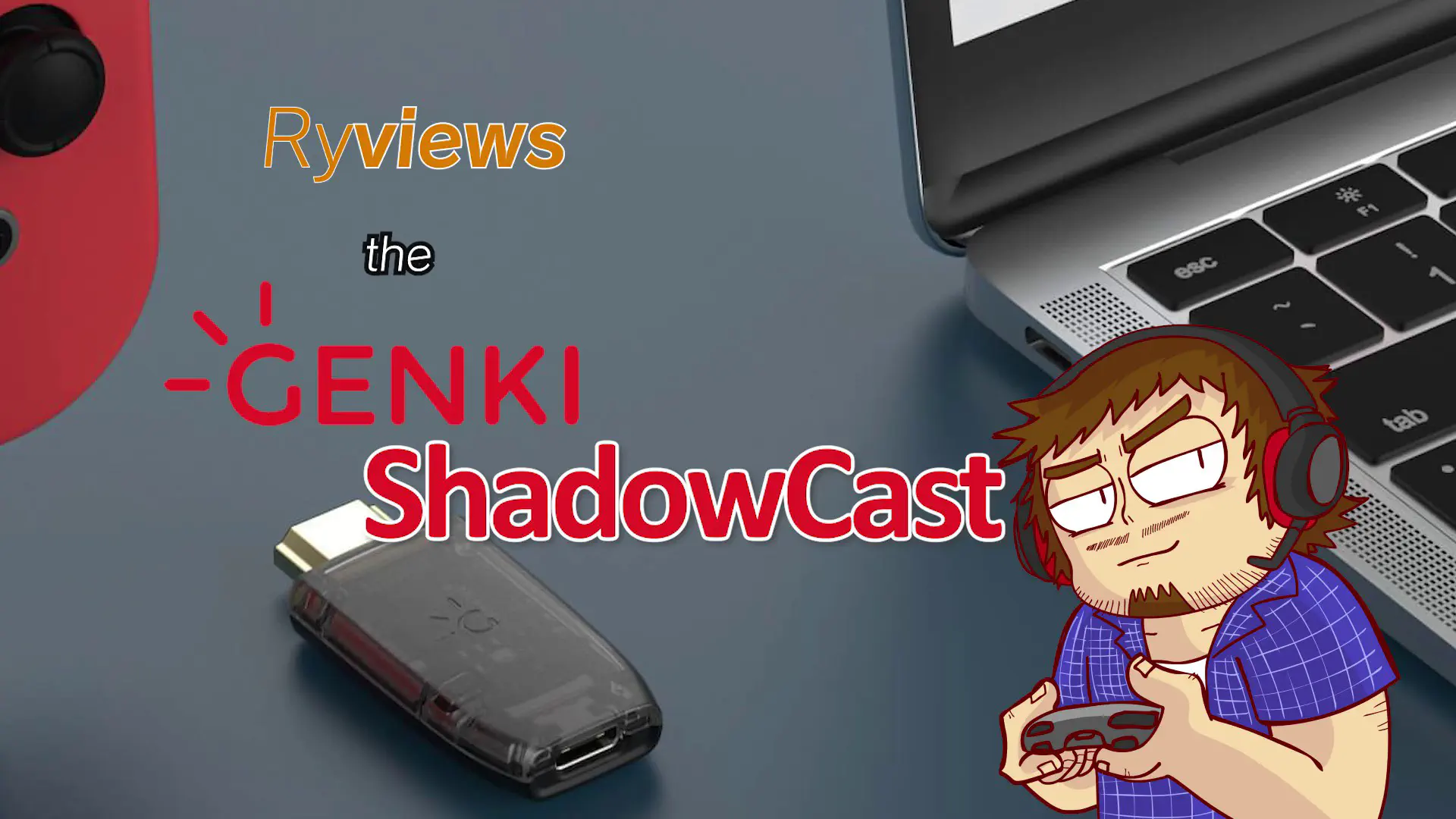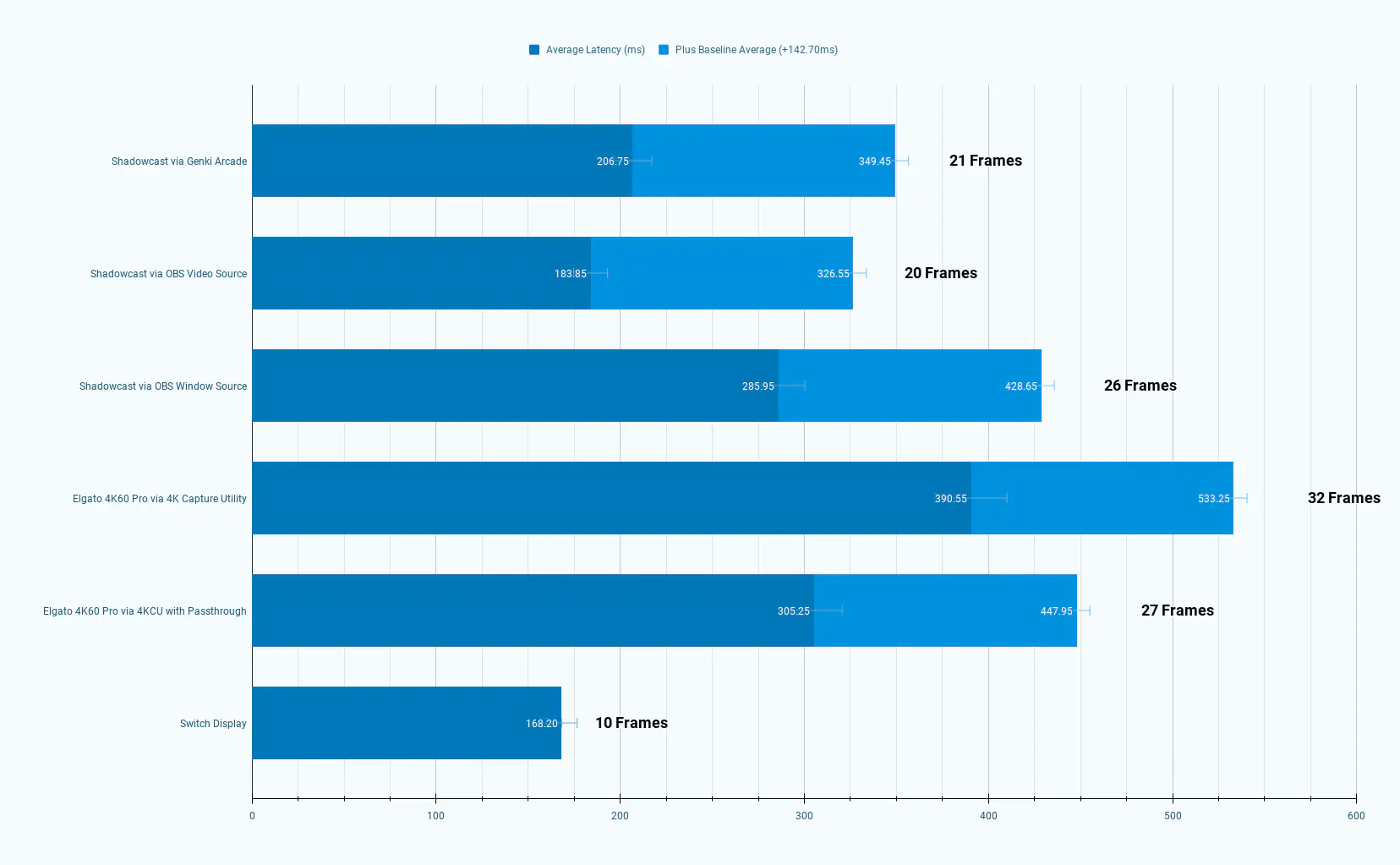Genki ShadowCast Input Latency Tests & First Impressions
Results of using a high framerate camera to perform input latency tests on the Genki ShadowCast.
Review Streaming Tech Thoughts
4 minutes

The Genki ShadowCast by Human Things is a capture card that fits entirely inside the shadow of the official Nintendo Switch dock, hence the name. It works just like any other USB thumb drive sized capture card, except for one thing: Human Things have developed specialized capture software customized specifically for the Shadowcast that they say reduces latency of the captured video to undetectably low levels, while using less system resources than alternatives.
Video #
Summary #
Here’s the gist of the raw data I gathered from my testing:
- Baseline latency of input from my Switch dock directly to my monitor averages to about 142.7ms. This is important to note, because the following measurements all take this latency into account. This is the actual latency one would experience when sitting in front of the TV or monitor. There’s a graph later on that shows the measured latencies minus this baseline, in case you want to get an idea of how much delay there is without factoring in input latency.
- Plugging in the Shadowcast and PC between the dock and monitor and using Genki’s Arcade app adds 206.75ms on average.
- Using OBS instead by adding the Shadowcast as a video capture device source added 183.85ms on average, and doing it as a window capture of the Genki Arcade app instead added about 285.95ms. There was a consistent delta of 27 frames latency (at 960 FPS; in 60 FPS this is less than half a frame) between the OBS and Arcade app.
- For comparison, capturing my Switch using my Elgato 4K60 Pro on Elgato’s 4K Capture Utility added about 390.55ms latency on average, almost twice that of the Shadowcast using Genki’s Arcade app.
- For some reason, when using the HDMI passthrough port on the 4K60 Pro, the overall latency it added when viewed through 4K Capture Utility was reduced to about 305.25ms. The passthrough feed itself had an average latency of about 183 frames (at 960 FPS; in 60 FPS this is closer to 11-12 frames) or 190.62ms
- And just for kicks I measured the latency of the Switch’s built-in screen undocked, which resulted in an average latency of 168.2ms. This is interesting because it’s higher than the docked result by about 25.5ms or 15-16 frames at 60 frames per second. I’m certain this is highly dependent on what TV or monitor is connected to the Switch dock.
Here’s what all that looks like when added to the average baseline latency of 142.7ms, as well as what that means in frames when considering 60 frames per second.
Caveats:
- I don’t have an HDMI splitter to isolate video signal latency alone. The best I can do is record footage of the screen using a camera set to 960 frames per second and then manually count the frames. This means that all the measurements I take will inherently include controller input latency, which is not something that Human Things ever mentioned they control for in their Kickstarter campaign.
- Because the frame counting is being done manually, it’s subject to human error. I try my best to make sure I’m choosing the best start and end points for every test scene, but some amount of subjectivity is to be expected with this method.
- I backed the ShadowCast and ordered three units because I believe in the project, I have faith that Human Things are a stand-up company based on their past Kickstarters, and I have experience with other capture cards that all exhibit some form of video signal latency. So I didn’t hope the ShadowCast would be “latency-free” or even close to it, and accepted that if indeed it was slightly faster than what I currently own, it’d be a pleasant surprise rather than an expectation.
Genki claims 0-0.02s or 20ms of latency when using the Shadowcast with their Genki Arcade app. They do not specify whether this measurement is of total latency of the entire video chain, or if it’s a measurement of additional latency when adding their Shadowcast into an existing setup. In my opinion, it’s safe to assume that Genki meant the latter, because the testing method they showed in their campaign video was to use an HDMI splitter to split the video output from the Nintendo Switch dock to the Shadowcast and a TV simultaneously, and show the difference in latency by looking at the difference in in-game timers on each screen.
My testing differs in that I’m measuring latency by using a camera set to film at 960 FPS and then counting the number of frames that go by between fully pressing a button on my controller, and seeing a response on the screen. I’m doing it this way mainly because I don’t have an HDMI splitter, and partly because I feel like it’s a more accurate way to measure latency. Admittedly my tools are not the most precise, but I still think it’s a better way of getting the numbers.
